Final tour day – Yukon Wildlife Preserve, and musher Frank Turner
Yesterday was our last day of activities on the 12-day Yukon Quest tour. We spent the morning at the Yukon Wildlife Preserve, and the afternoon with legendary musher Frank Turner at his dog sledding operation.
We had driven from Dawson City back to Whitehorse on Friday, but there’s not really anything to tell you about from that day.
The Yukon Wildlife Preserve opens at 10:30 in the winter, so our final day started with a nice easy morning. We were at the gate a few minutes before it opened, with the temperature a relatively balmy -8°C (+18°F).
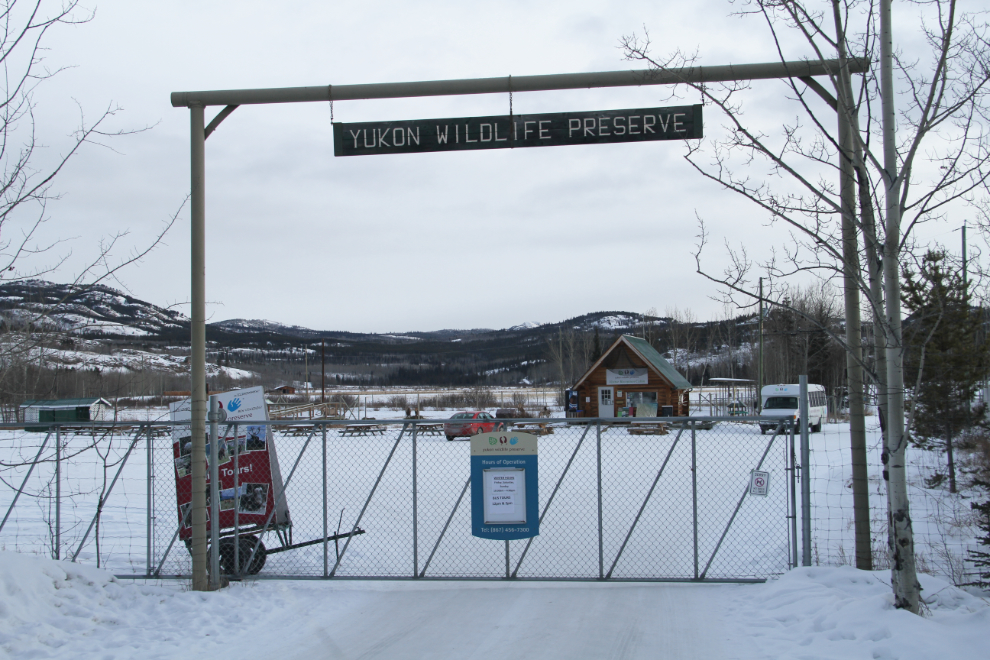
The guides at the Preserve can always be counted on to be extremely knowledgable, and Jake Paleczny was no exception. We began the tour with an introduction at a viewing platform beside the elk habitat. Despite the reasonable temperature, a strong wind was bitterly cold.

Elk (Cervus canadensis) seen from the viewing platform. We then left to tour the property in our van (see a map of it).
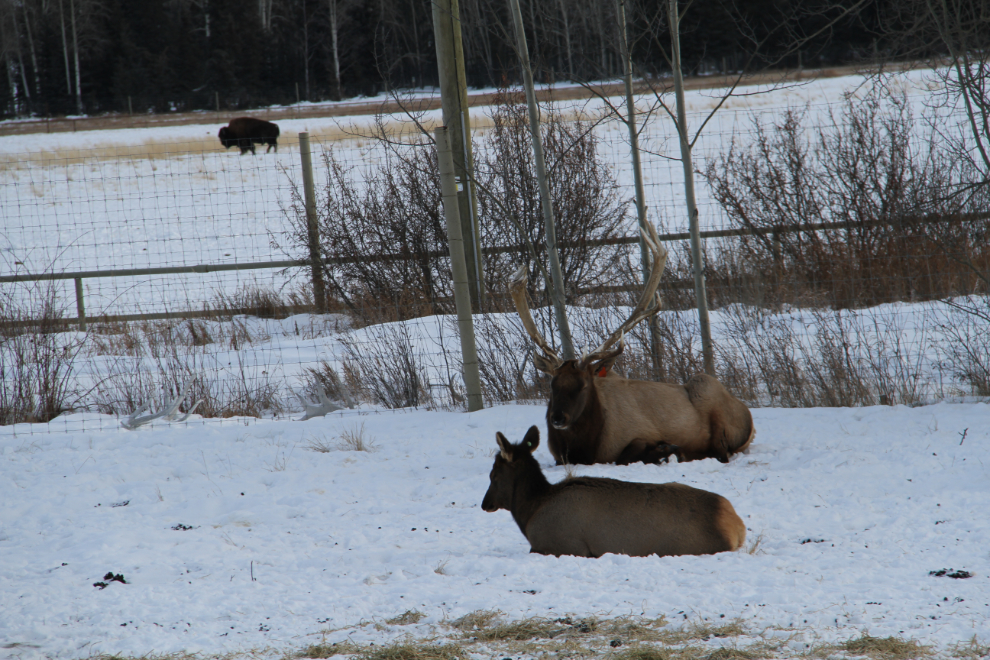
Our next stop was at the habitat for Wood bison (Bison bison athabascae), where this female was close to the fence. Classified as a threatened species in Canada, Wood bison were once common in the Yukon, but died out. An attempt to reintroduce the species in 1951 failed – they all seem to have died by 1973. Another 170 bison were released between 1988 and 1992 in the Nisling River valley, 160 km west of Whitehorse, however, and that herd (the Aishihik herd) has grown to about 1,200.
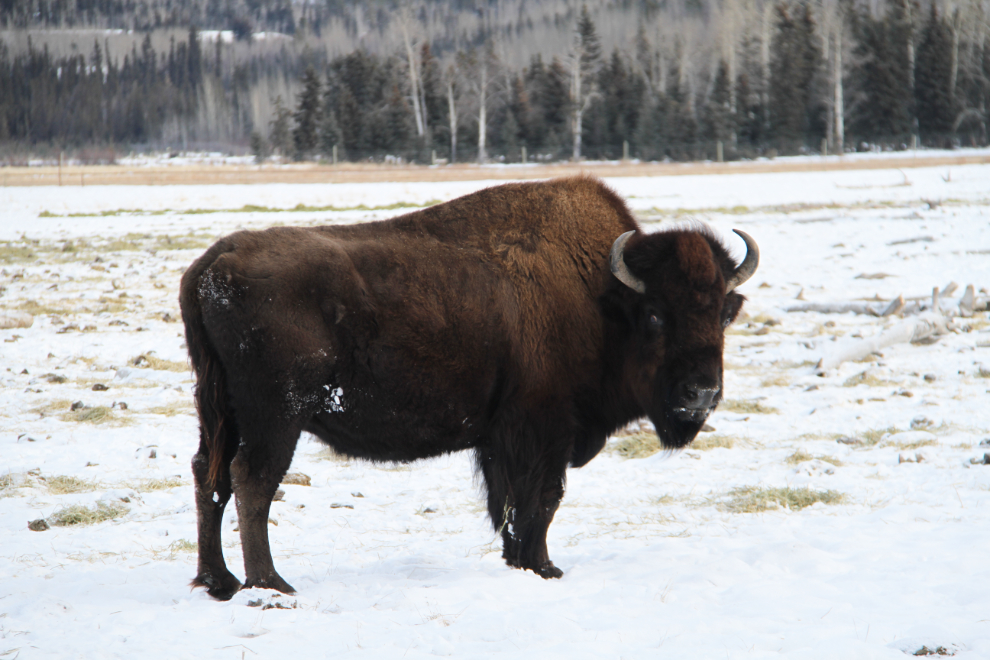
Sightings of Mule deer (Odocoileus hemionus) in the Yukon date back to the 1920s, and they’ve become much more common in recent years as our climate changes. Mule deer have been known to break into the Yukon Wildlife Preserve and never leave – a muley resort, with good food and no predators, it seems!
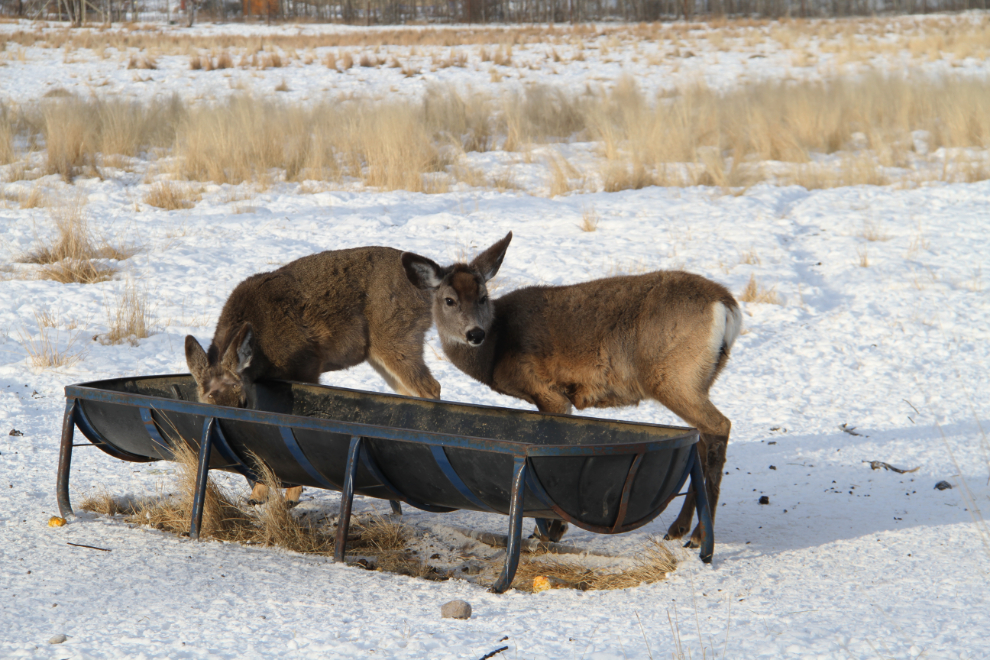
It was great to see all 3 of the Preserve’s moose (Alces alces) right at the fence and happy to receive visitors. The moose in the next photo is “JB”, who was abandoned as a calf near Haines Junction in 2015 – there’s a wonderful video about her on Youtube.

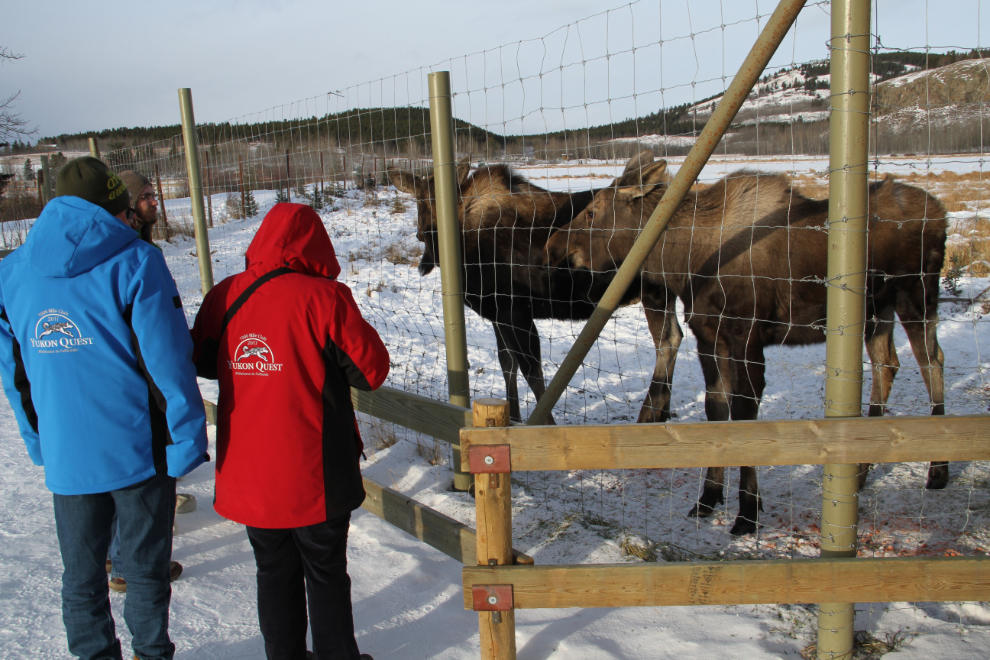
It’s not common to see any of the Muskox (Ovibos moschatus) close to the fence, but we got lucky there as well. While these ones displayed their defensive positioning upon our approach, others were very animated.
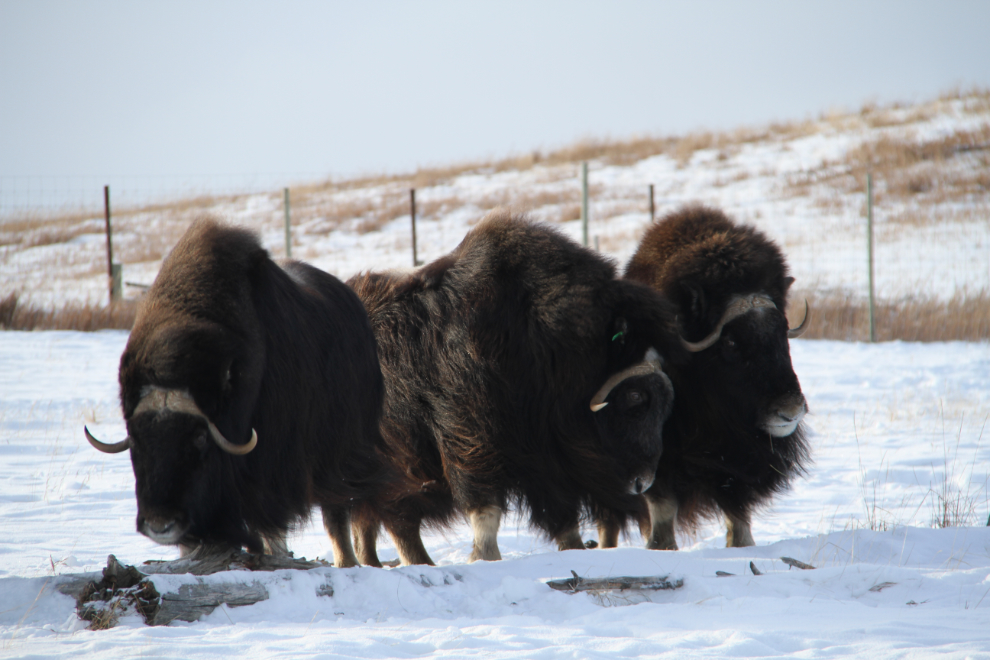
The Mountain goats (Oreamnos americanus) are often very sociable to visitors, and a couple who had been up on the cliffs came down and joined several others close to the fence.
20170212

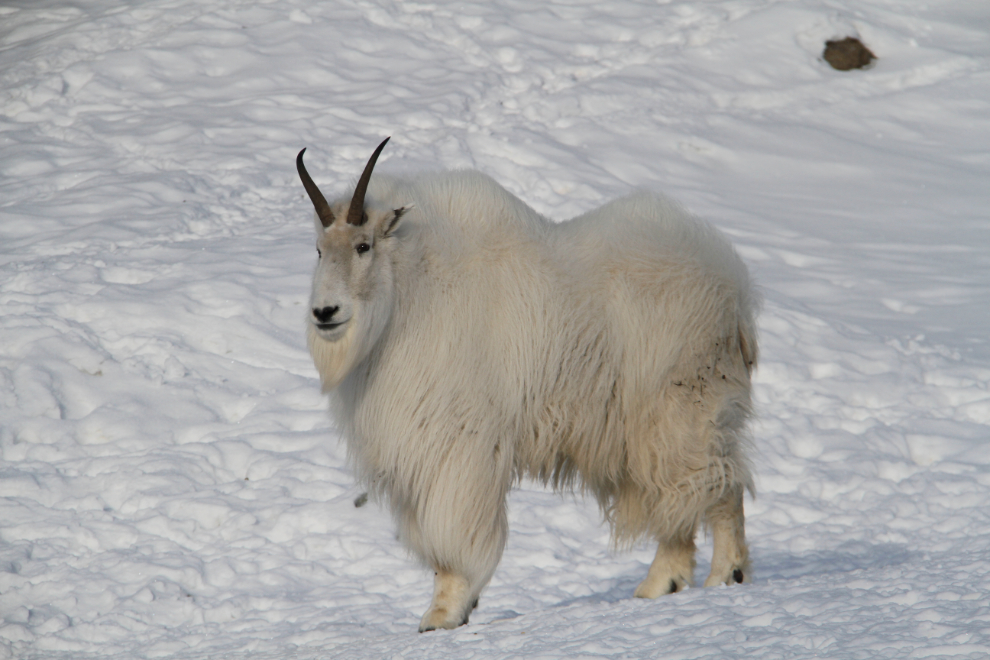
When even 2 of the Canada lynx (Lynx canadensis) were near the fence, I was beginning to be quite incredulous at our luck. Lynx are really curious, and although they can often see you, they’re generally very difficult to spot – that’s true both at the Yukon Wildlife Preserve, and along Yukon highways.
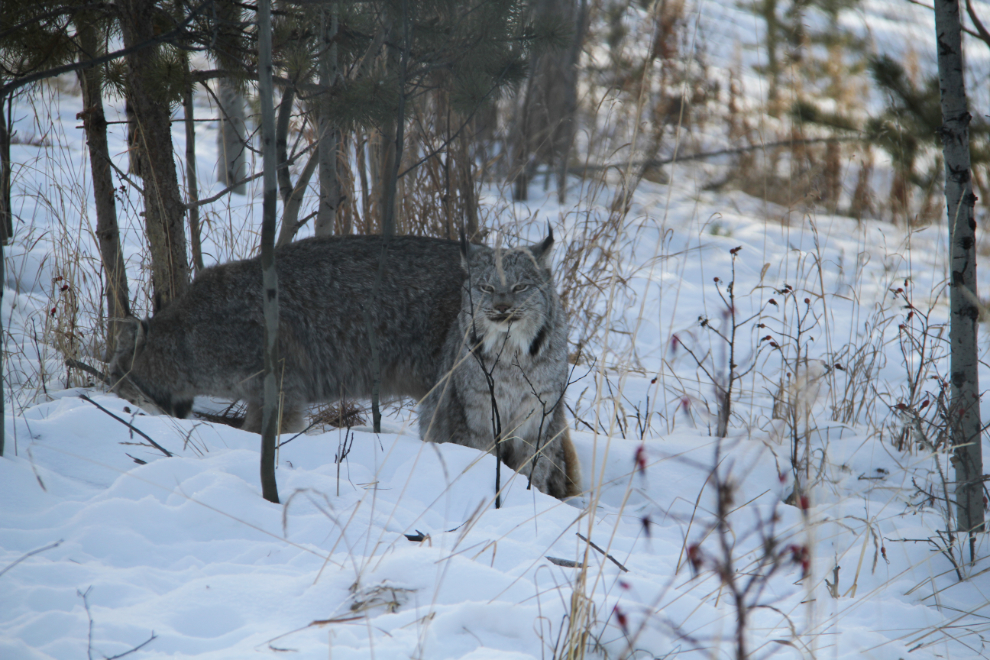
Next, a young Red fox (Vulpes vulpes) who was found abandoned when he was only days old – it was a month before he was positively identified as a fox and not a dog as was initially thought. CBC has an article with video about that process. He’s very cute, but his actions make him totally adorable – I’m certain that he would like to be somebody’s snuggle-puppy.
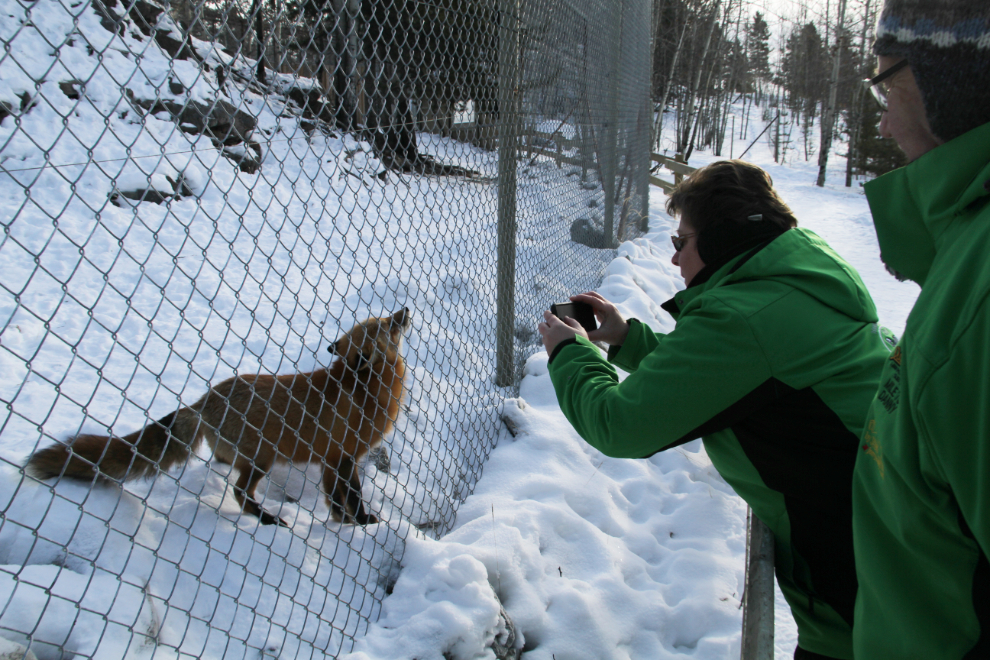
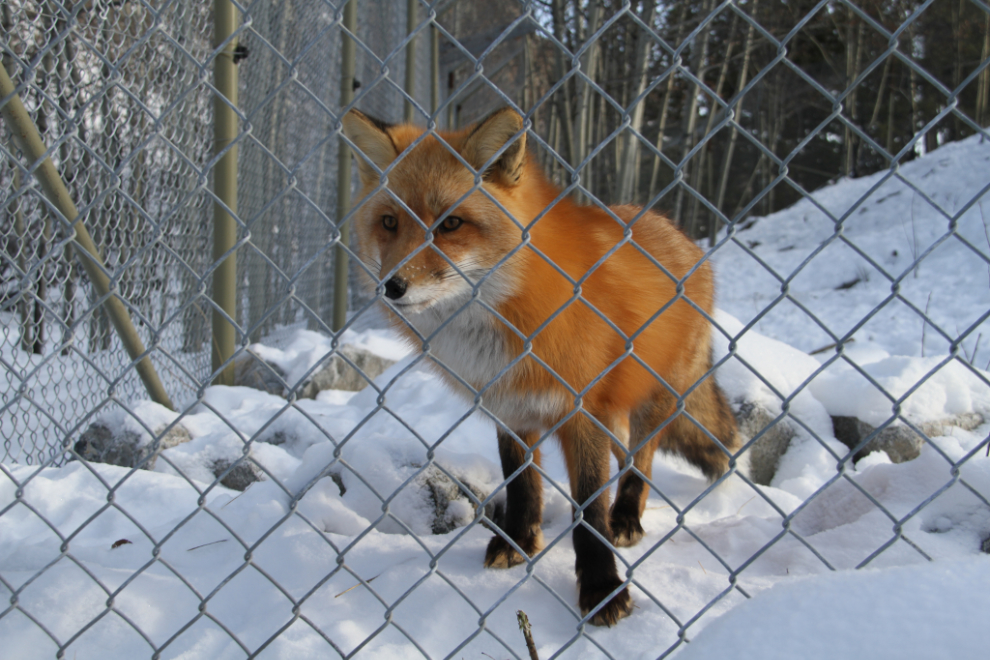
Right across the road from the Red fox are 2 Arctic foxes (Alopex lagopus). In the Spring, their white winter coats change to brown or greyish.

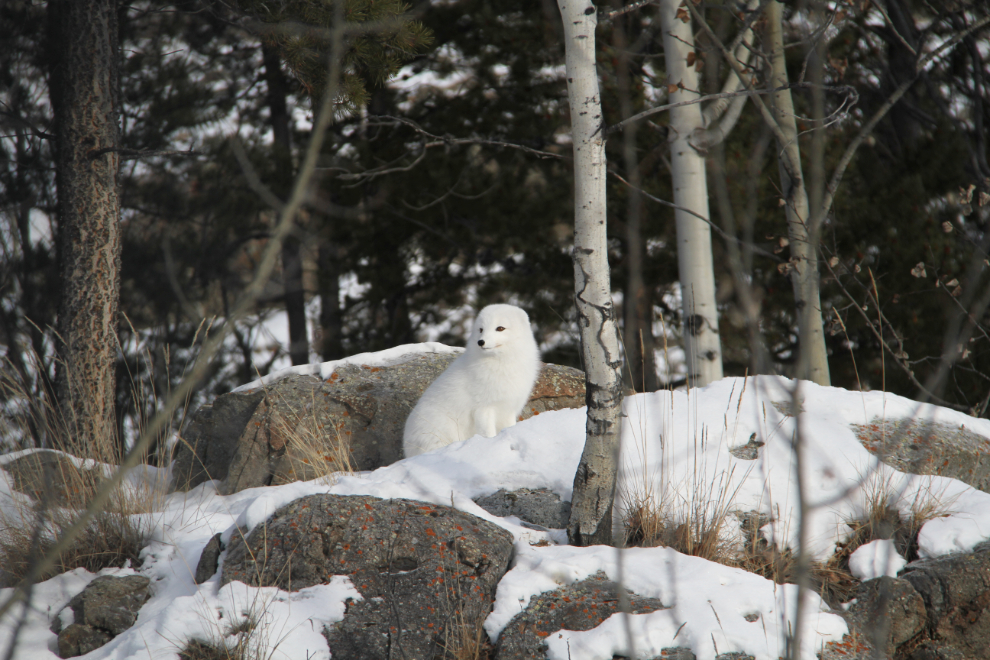
We had been spending so much time at each habitat that our time ran short, and our visits with the sheep and caribou were short. About 90 minutes after we left the visitor centre, we were back at the elk habitat.
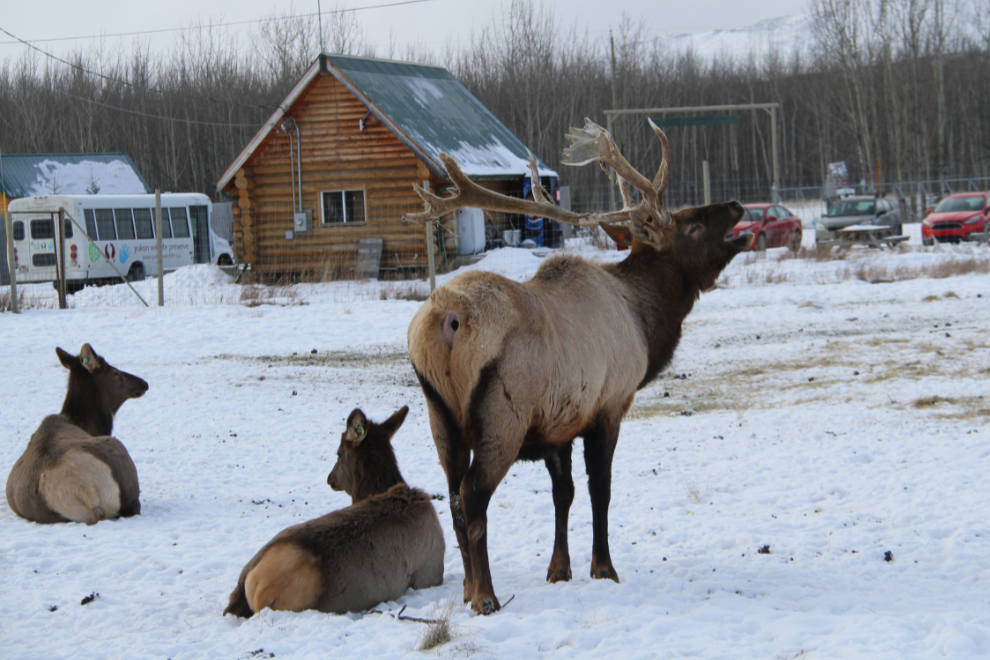
For our final lunch together, we went to the dog camp of Muktuk Adventures. There, we feasted on bison burgers, and the stories told by legendary musher Frank Turner. As many times as I’ve been there over the past 27 years, I never get tired of listening to him. When he grabs a chair and uses it as his sled to show us how steep the climb/descent at American Summit is, it’s pretty tough to not get caught up in his passion for mushing. Frank started the Yukon Quest 24 times in 25 years, crossed the finish line 17 times, placed in the top six 10 times, and won the 1,000-mile race once.
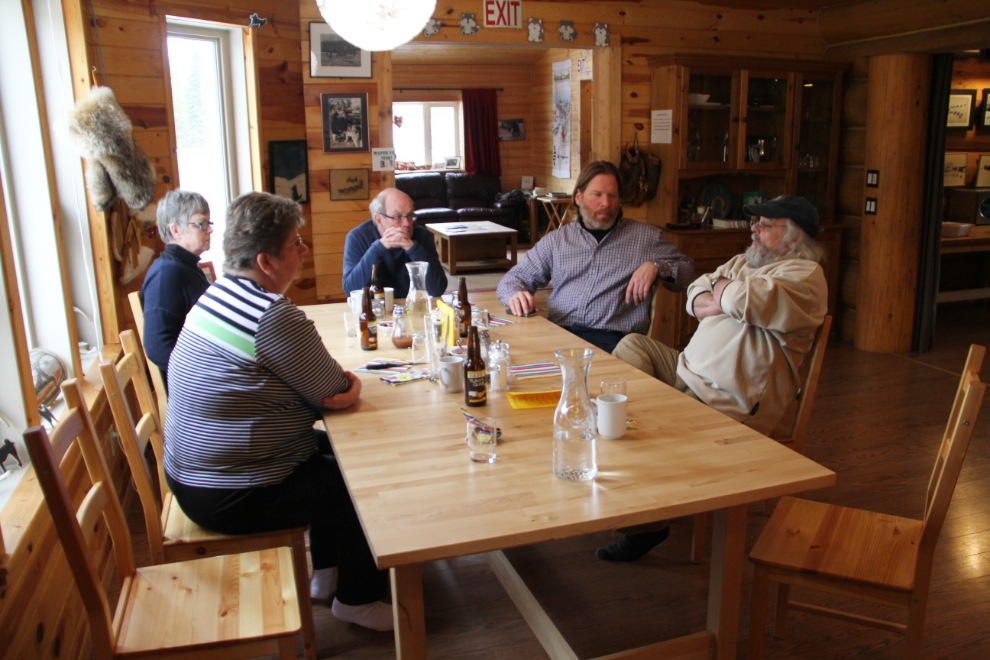
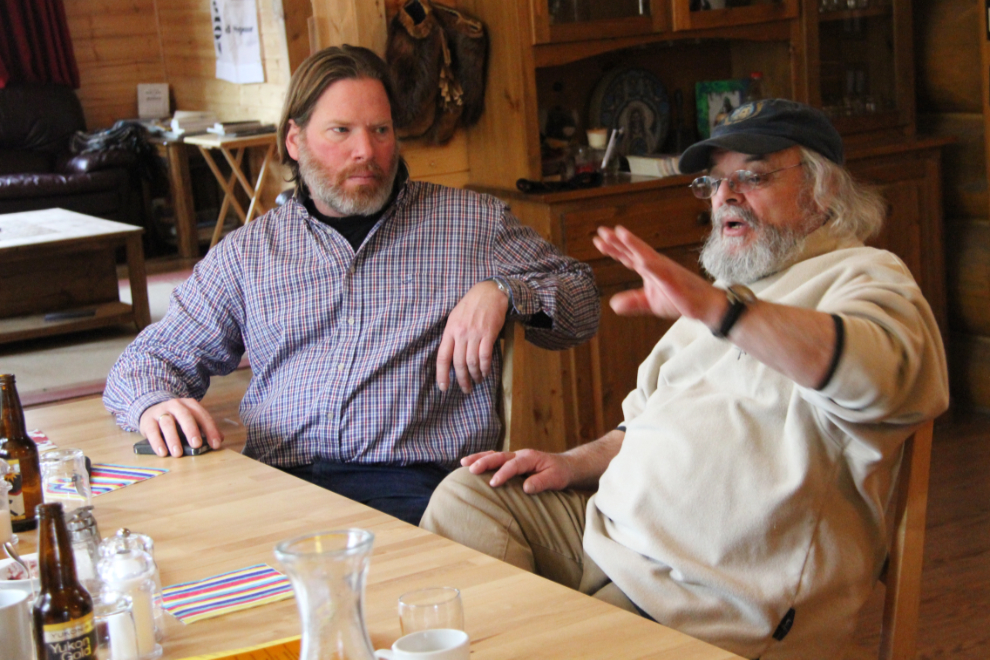
At 04:00 this morning, I picked my new friends (and my old friend Jeremy) up at the Westmark Whitehorse for the final time, and took them to the airport for their returns to Alberta and Ontario. It was an exceptionally good tour, and I think that the people who hadn’t been to the Yukon before understand now why some of us are so passionate about this little corner of the world.